As part of the North East Ladybird Spot, take a closer look at six of the target ladybirds to spot this summer.
In early summer, it is not unusual to see more ladybird larvae than adults. Many ladybirds, who emerged in spring, have reached the end of their lifespan. Now is the perfect time to search for the new adult ladybirds, who can be found where their food is. For many, this is aphids and other small bugs, while for others this can be mildew fungus found on leaves. This means the best place to spot ladybirds is where there are plants including summer meadows, garden plant borders and other grassy areas.
Please do share your ladybird sightings with the North East Ladybird Spot and via social media using the hashtag #NELadybirdSpot. Your records will improve our understanding of these exquisite but under-recorded species in the North East.
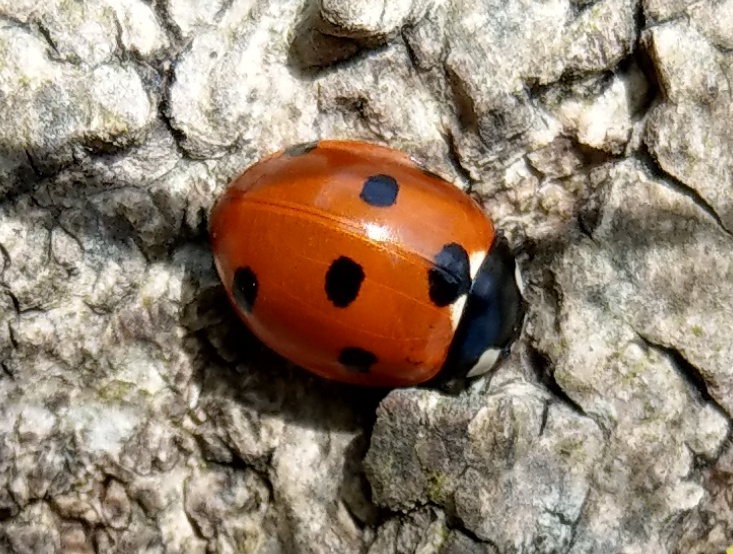
Seven-Spot Ladybird
The Seven-spot Ladybird is the classic ladybird: red with seven black spots. There are three black spots on each side of the wing case and a central spot behind the protonum.
Found in almost any habitat, both adults and larvae eat aphids and other soft-bodied insects. When these become scarce, adults may feed on pollen and the larvae can become cannibalistic.
Discover more about the Seven-spot Ladybird here.
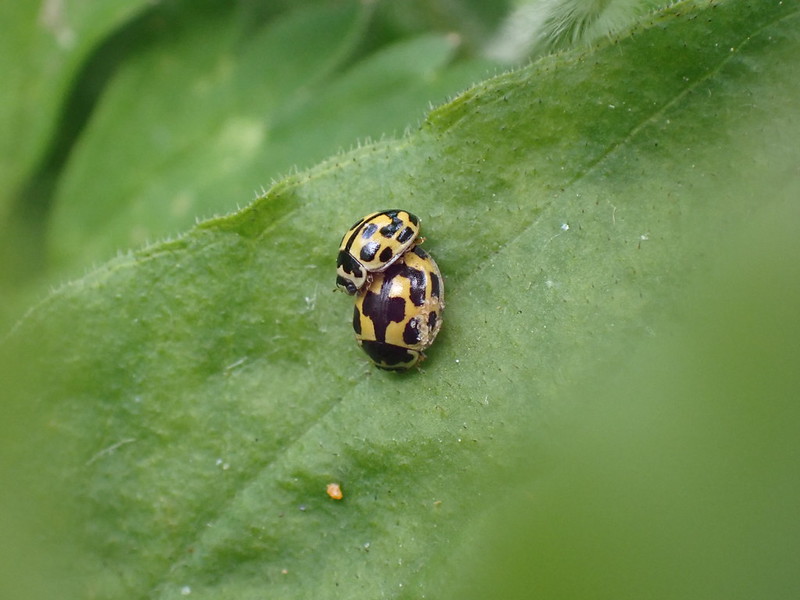
14-Spot Ladybird
The 14-spot Ladybird is a yellow ladybird with rectangular black spots. The spots are often fused together, forming a smiley ‘clown’ face.
An aphid eater, it can be found on herbaceous vegetation in a wide variety of habitats. It emerges from overwintering later than other species, earning it the name ‘dormouse ladybird’.
Discover more about the 14-spot Ladybird here.
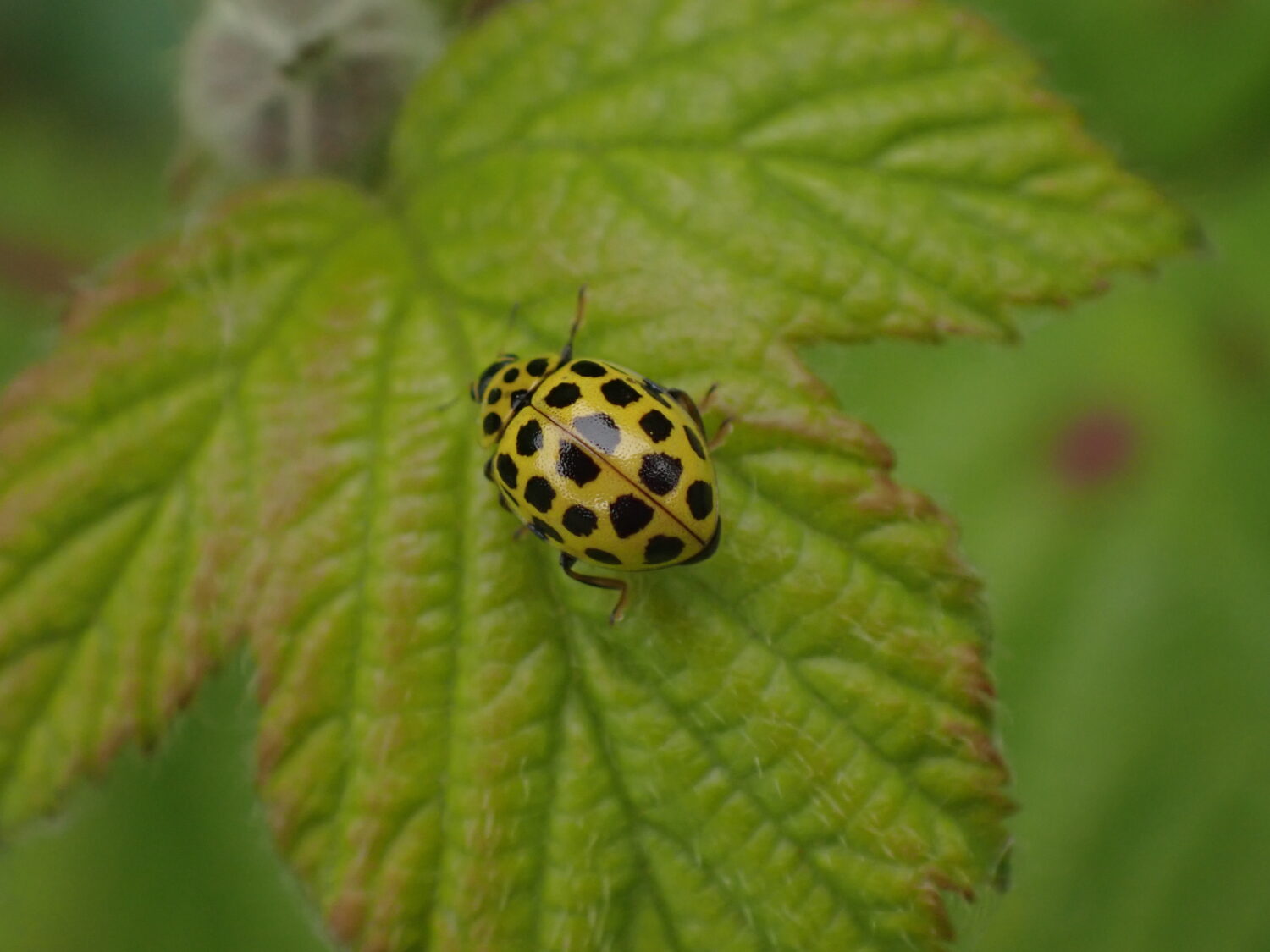
22-Spot Ladybird
Very small at just 3 to 4mm in length, the 22-spot Ladybird is a bright yellow ladybird with round spots. Unlike the yellow 14-spot Ladybird, its spots rarely fuse.
Favouring grassy areas, this ladybird feeds on mildew fungus, particularly on Hogweed.
Discover more about the 22-spot Ladybird here.
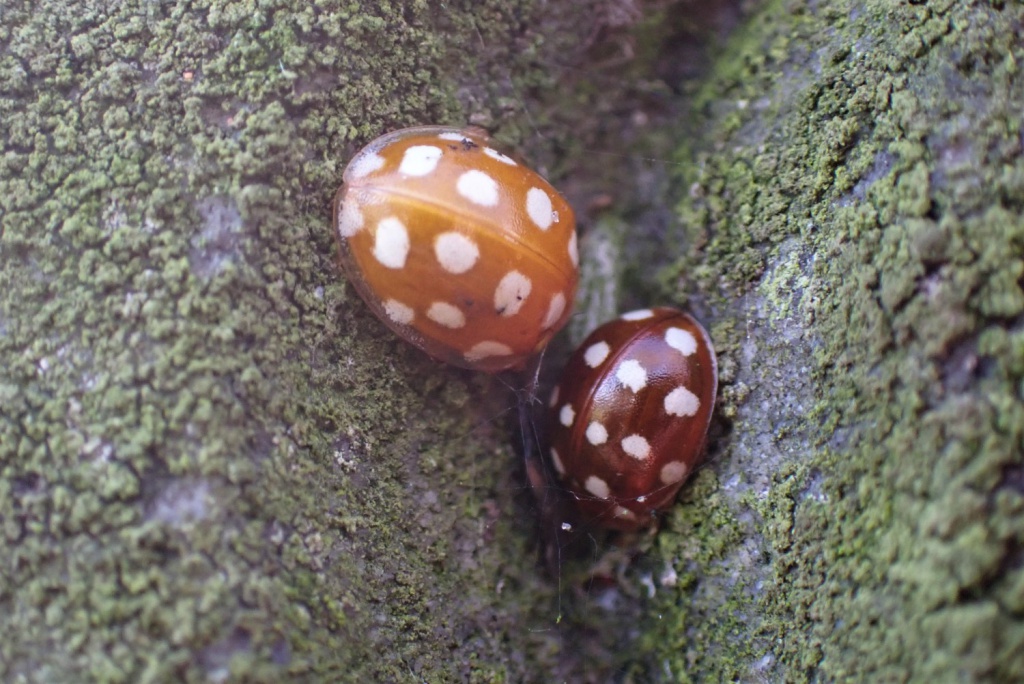
Orange and Cream-spot Ladybird
Both the Orange and Cream-spot Ladybird have creamy white spots. However, Cream-spot has a maroon-brown background while the Orange Ladybird is bright orange.
Orange Ladybirds feed on mildew fungus found on the leaves of deciduous trees. It is attracted to light and can be found in moth traps. In contrast, the Cream-spot Ladybird feeds on aphids and other soft-bodied insects.
Discover more about the Orange and Cream-spot Ladybird.
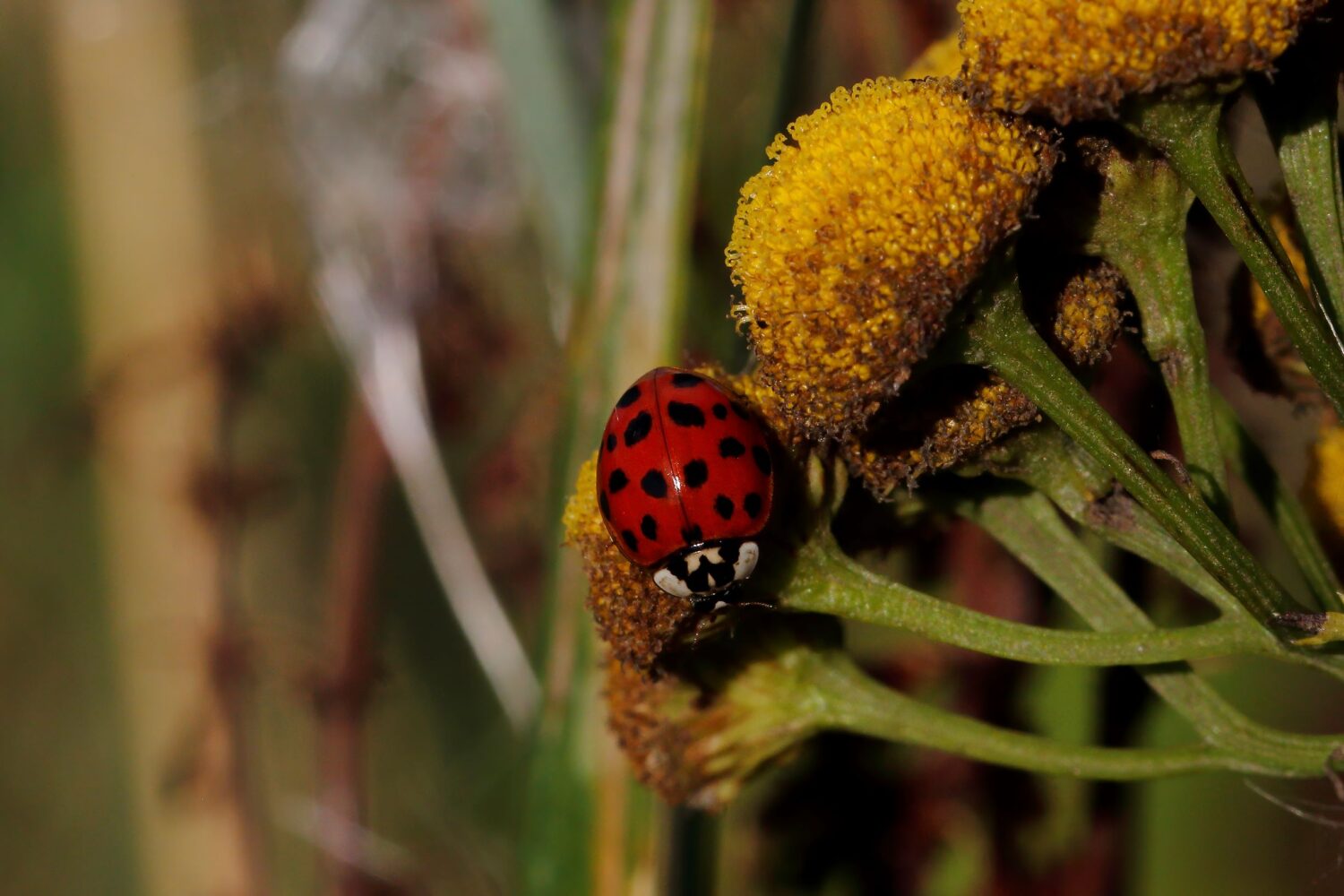
Harlequin Ladybird
First recorded in the North East in 2010, the Harlequin is a relatively new arrival to the region. The larvae are voracious eaters, consuming aphids, small insects and other ladybird larvae.
The Harlequin is a very variable ladybird but is large (five to eight mm in length) and has a domed appearance. Its typical form is orange or red with black spots. A key feature is the two black spots on each ‘shoulder’ of the wing case.
Discover more about the Harlequin Ladybird and how to identify it here.
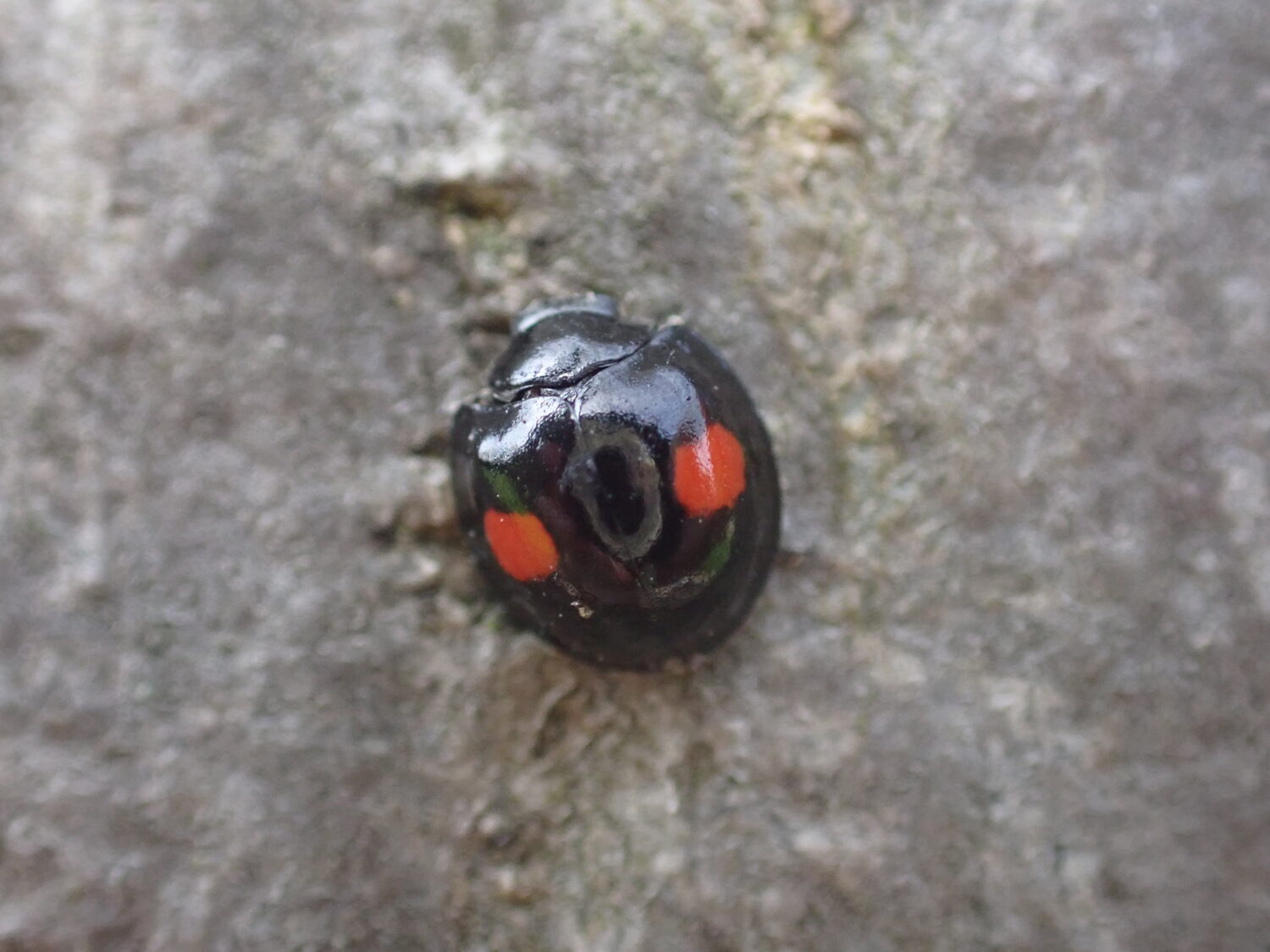
Join the North East Ladybird Spot
Urban or rural, beginner or expert, we need your help to record ladybirds across the North East this spring and summer.
Your records can add to our understanding of ladybirds in the region and inform conservation and monitoring efforts.
Taking part is easy and every record counts, wherever you live in the region. Records of all ladybird species are encouraged.